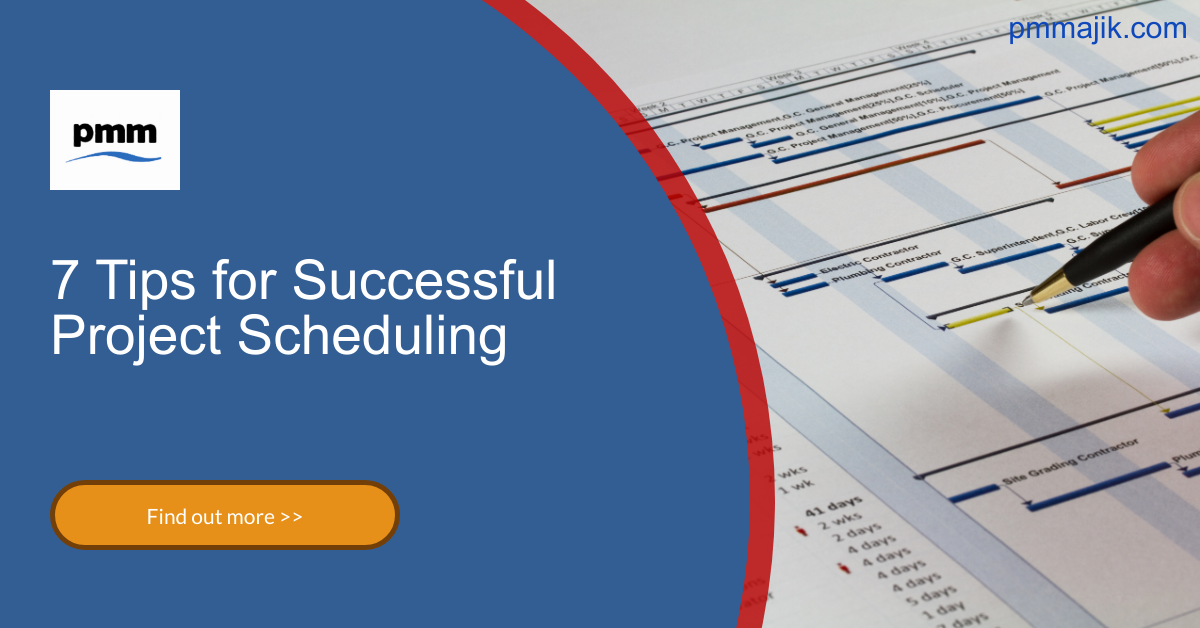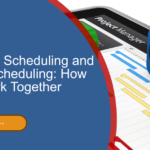Project scheduling is the bread and butter of project management, and it’s a project management office’s role to support the process. Whether you’re redesigning our project scheduling framework or creating a PMO and want to get it correct from the start, you need our top seven tips for a successful project schedule.
Not only does a schedule help your PMO track whether projects are on track to hit their deadline, you can also use this information for analysis and reporting. Everyone involved in a project will want to know where a project is up to benchmarked against a well-thought-out schedule.
Once you’ve got your time management sorted, created schedules for different purposes, and have your schedule and plan in place, you’re ready to start the project. To get to this point, you’ll need to:
- Have the right people involved in scheduling
- Understand the data you need to have
- Take into account risks
- Build-in reasonable targets
And more, which we’re covering now.
1. Invite stakeholder input
Not only does bringing stakeholders into scheduling build relationships, it means projects can take advantage of their expertise. Asking your freelancers for a time estimate on a project, checking with your sponsor what the agreed delivery dates are, or confirming spending limits with accounting from the start will ensure everyone is on the same page.
Whilst input is always helpful, you also need to ensure that one person is in charge of gathering the feedback and getting the schedule signed off.
2. Use data from previous projects
There’s no need to take a wild guess at how long a task will take when scheduling a project. A PMO can and should have information from past projects that’s available to project managers.
This data can act as a benchmark. It’ll help managers understand how long a piece of code can take to write, check, and implement or get a quick cross-reference on how long deliveries of stock can take.
3. Understand project risks
Doing a thorough risk assessment of the project before starting the schedule is prudent. Some risks that could impact a project schedule include:
- Scope creep
- Technology risk
- Resource risk, such as sick days
- Procurement risk
It’s important that the schedule have a reasonable contingency in place. How much that contingency should be can be calculated by looking at the past project data that we just covered.
4. Plan for vacations
So much of scheduling is data and processes, and it can be easy to forget about the real world surrounding a project.
Your people can and will take holidays during a project. You can ask them to book in advance, and the company may have policies about short-notice holidays, but you still need to factor in that people will take time off.
It’s also worth checking public holidays in other countries if you have an international team or a global pool of suppliers and freelancers.
5. Consider using a critical path
Although critical path scheduling isn’t part of some common project methodologies like Agile and Waterfall, it can still be useful. If your PMO decides against using critical path for the final schedule, it can still be used as a verification tool. Define the critical path and see how close your own schedule is or if there are tweaks to be made.
6. Record your scheduling logic
When the schedule is being created, make sure project managers are recording the reasoning for their choices.
This links back to our second tip about using previous project data. Having a record of why you decided an activity would take 20 hours, not 30 or why you chose one particular supplier even if their delivery time was longer will help the next person making these choices.
It can also feed into the project closing process where you assess what went well and what could be improved during a project.
7. Include manageable milestones
Make sure that every project in your office has achievable milestones. Even short, quick projects should be broken down into smaller chunks of work.
First, this will help your PMO and the project team if there is a delay and if a deadline needs to be reevaluated. Second, when milestones are hit, it gives the project team a win that can motivate them to keep delivering.
Top tips for scheduling a project
Scheduling a project can take a lot of work, with breaking down activities, researching timeframes, and gathering information about resources. Our top seven tips for a successful project schedule should help ensure your PMO projects are delivered on time.






